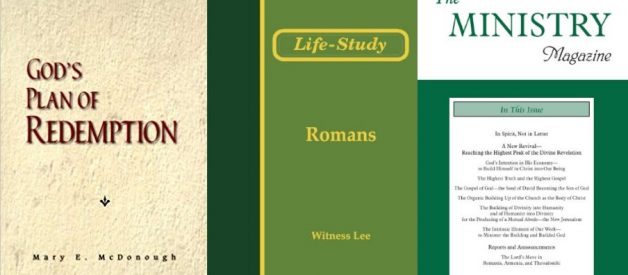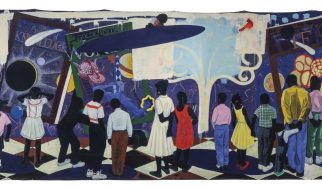What these two divine titles reveal to us about the significance of Christ?s resurrection
 Image borrowed with permission from agodman.com
Image borrowed with permission from agodman.com
By definition if someone is an only begotten son then he does not have any brothers. The bible uses this designation for Christ (John 1:18, 3:16) but it also says that He is the firstborn Son of God among many brothers (Rom. 8:29, John 20:17, Heb. 2:11). Apparent contradictions in the bible indicate that a deeper understanding of its meaning is required. Biblical truth often has two sides which are not contradictory but complementary. This usually involves unlocking some non-superficial realization of its significance. In the case of these two divine titles a more profound understanding of Christ?s resurrection is needed. In this post we will explore Christ?s resurrection as described by the bible as being Christ?s second birth (Acts 13:33).
A rich spiritual lineage
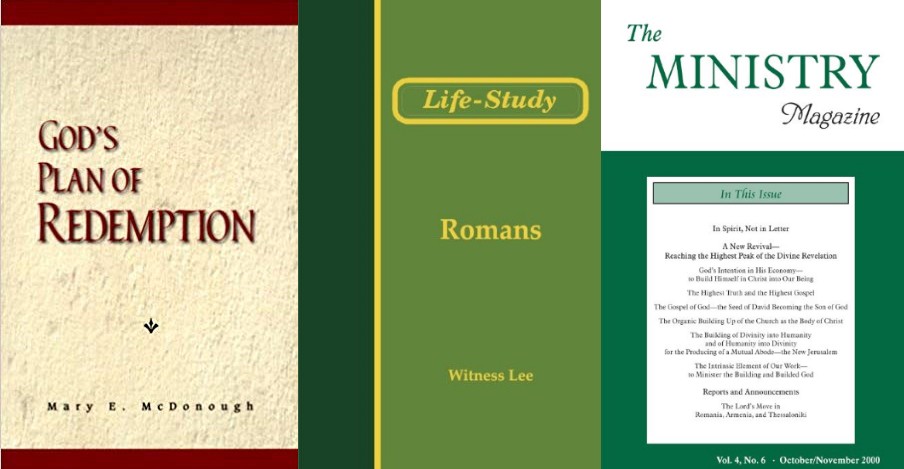
This truth is a hidden gem. The footnotes in the recovery version of the bible written by Witness Lee was a big help in writing this post. Without his help I could not see this diamond and for that I am very grateful. Yet more importantly, without the help of a sister by the name of Mary McDonough I wouldn?t be able to share this diamond with diagrams that clearly illustrate the truth revealed in the verses. In this instance a picture is worth 1000 words and I?m very grateful for the pictures she has provided us.
Mary McDonough was a wonderful sister who wrote the hymn There?s a Man in the glory and who also wrote the book God?s Plan of Redemption, which was first published in 1920. She used the illustrations I present in this post to teach this truth to children in her Sunday school class. I really feel grateful that such an awesome truth was revealed not to a great preacher but to a small Sunday school teacher. Thank God that He revealed this high and awesome truth to someone who made illustrations with which to teach small children. This truth is not merely for theologians to debate and discuss, it is for small children to enjoy! Surely appreciating this matter is within the reach of any seeking believer.
Adam created to be a tripartite man
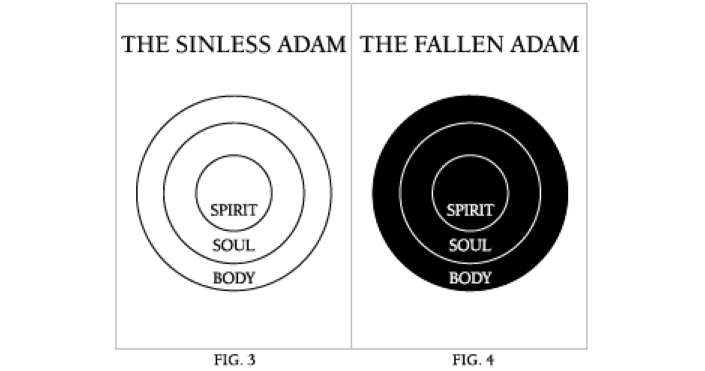
The above illustrations and those to follow are taken directly from God?s Plan of Redemption. In the illustrations above we see a visual representation of the truth depicted in the following verse:
1 Thessalonians 5:23 And the God of peace Himself sanctify you wholly, and may your spirit and soul and body be preserved complete, without blame, at the coming of our Lord Jesus Christ.
For us to understand Christ?s two designations being both the only begotten Son of God, and the firstborn Son of God we first need to understand how God created man. God created man with three parts:
- A human spirit ?Adam was created with a spirit (Zech. 12:1) with which to contact God, but which became deadened by the fall (Eph. 2:1, 2:5; Col. 2:13). As demonstrated by several verses, this part of man is distinct and separate from his soul (1 Thes. 5:23, 1 Cor. 2:14, Heb. 4:12, Jude 19; see Strong?s Concordance for ?psuchikos? which can be translated as ?of the soul?, soulish or unspiritual).
- A soul ? Adam was created with a soul Gen. 2:7, but he was not created with a self. In Matt. 16 the term ?psuch? translated as both soul and life is used and in a parallel passage in Luke 9 this term is replaced with ?himself?. This indicates that our soul-life is our self. The self is the fallen life of the soul which must be denied (Matt. 16:24?26; Luke 9:23?24).
- A body ? Adam was created with a body which after the fall became transmuted to be the flesh (Gen. 6:3, 6:12?13). When God created man he said of his creation ?very good? (Gen. 1:31). But after the fall nothing good dwelled in our flesh, because it became inhabited by sin (Rom. 7:17-20).
John describes Christ?s birth as the Word of God becoming flesh (John 1:14). This was the Triune God being born into humanity (Matt. 1:23, Col. 2:9). But into which part of the man Jesus, His humanity, was God born? Yes I know this sounds like a strange question because we think of Jesus as being 100% God, but just like us Jesus was a tripartite man. Was God born into His spirit, His soul, His body, all of these or some combination of these?
Christ as the Last Adam before and after resurrection

At the time of Christ?s incarnation there had never been another man in human history who had been born of God?s life and nature. In this regard Christ was the only begotten Son of God (1 John 4:9). Sister McDonough clearly indicates by the above diagram that the man Jesus was special. Figure 5 is entitled the God-man, the Last Adam, and it represents Christ from the time of his birth until the time of his crucifixion. In this figure the Godhead is indicated by a gold star. In addition to God?s life and nature signified by the color gold, Christ also was the embodiment of the Godhead (Matt. 1:23, John 1:14, Col. 2:9).
God?s intention however was not merely to have Christ remain as the only begotten Son, rather that Christ would be the prototype as the pioneer of our salvation and that we would be the mass reproduction (John 3:6, John 1:13, Heb. 2:10, Rom 8:29?30, 1 John 3:2). Through his resurrection he regenerated his believers unto a living hope thus making them His many brothers (1 Pet 1:3, John 20:17). In this regard Christ (with His many brothers) is the firstborn Son of God (Rom. 8:29).
The diagram also shows that Jesus?s soul and body had no sin (2 Cor. 5:21, Heb. 4:15, Rom. 8:3). The great mystery of these figures is that they indicate that some parts of him seem to lack divinity before his resurrection (figure 5). Figure 7 represents Christ in resurrection alive for evermore. According to this diagram, only after His resurrection was every part of Christ?s humanity fully deified. Does this mean that some part of Christ?s humanity lacked the divine life and nature prior to resurrection? Is there any scriptural basis for such a teaching?
The most obvious answer

There are several different ways to answer the question, ?did every part of Christ?s humanity have the divine life prior to resurrection?? Before getting into some of the more profound answers to this question I think its important to point out that some part of Christ?s humanity needed to die in order to accomplish redemption. How can Christ?s physical body die if it has eternal life (Rev. 1:18, Rom. 6:9)? Acts 20:28 and Rev. 5:9 says that God obtained the church by shedding his own blood. Apart from incarnation I do not see how it would be possible for God to bleed (Heb 2:14). God needed to become truly mortal to accomplish redemption, how else could God be killed by his own creation (Acts 3:15)? Heb. 2:9 says:
But we see Jesus, who was made a little inferior to the angels because of the suffering of death, crowned with glory and honor, so that by the grace of God He might taste death on behalf of everything.
If Christ?s physical body had been constituted with eternal life it would not be possible for him to suffer death. As to what extent Christ?s soul was constituted with eternal life, this will remain a mystery for now until we have the opportunity to ask Him about it in the kingdom. Certainly He did express a full range of human emotions (Matt. 26:36?46, Mark 14:32?42, Luke 22:40?46). At times he needed to pray to be strengthened in his determination to carry out God?s plan (Luke 22:43). If his soul was already fully saturated with God why would his humanity need strengthening? A few verses which indicate that Jesus could be surprised (astonished) suggest that some part of his soul was not omniscient (Luke 7:9, Mark 6:6, Matt 8:10). Although his intuition about people was supernaturally excellent (Mark 2:8, 12:15; Matt. 9:4, 12:25; Luke 5:22, 6:8). This makes Him marvelous.
The revelation that was given by the Lord to sister Mary was truly exceptional. When the Lord shows something profound to a believer there is usually details about the revelation that are mysterious without contradicting the scriptures. The gold star in sister Mary?s diagrams is Christ?s human spirit fully one with the Spirit of God. The star cuts across his soul and body without engulfing his soul and body. This distinction is a profound insight. More than just being mysterious it also rings true given that the disciples saw the Lord transfigured at least once before his death (Matt. 17:2, Mark 9:2?3, Luke. 9:29, 2 Pet. 1:16?17).
Christ being designated the Son of God out of His resurrection
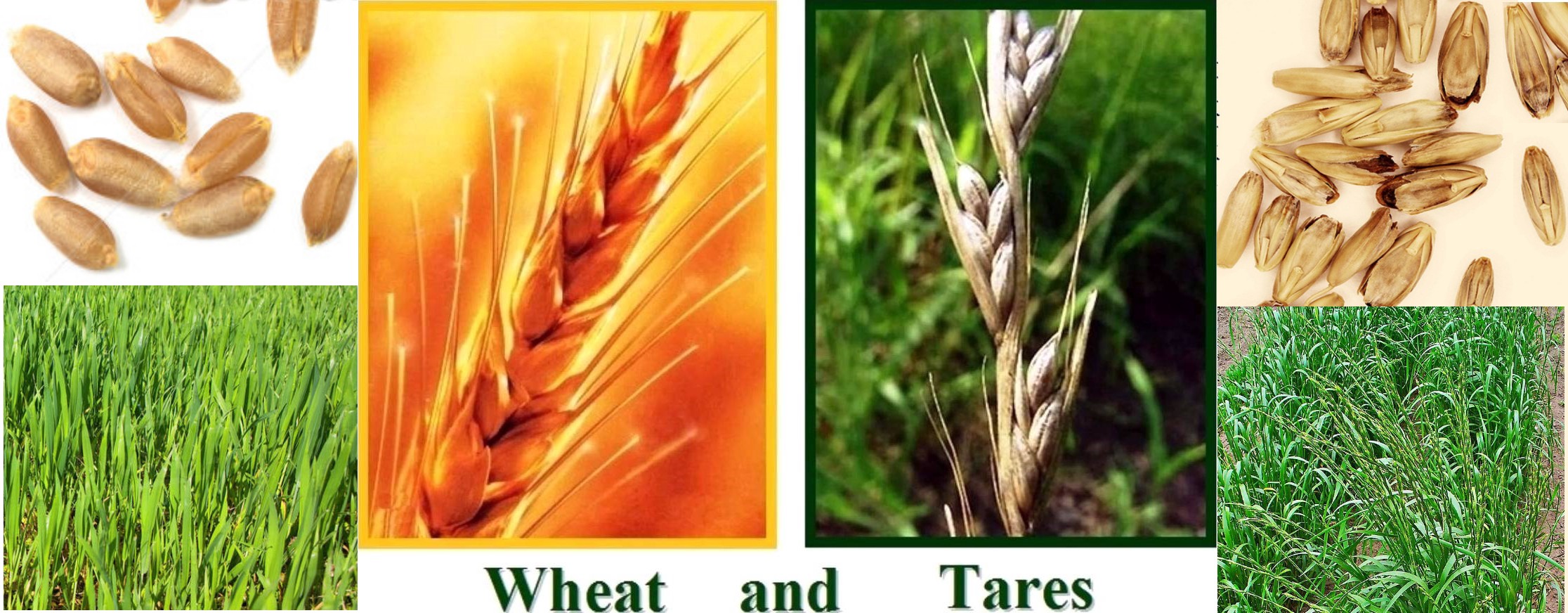 Can you tell the difference between a wheat seed and a darnel seed?
Can you tell the difference between a wheat seed and a darnel seed?
Now for the profound answer I?m going to be paraphrasing long quotes from the ministry magazine Vol. 4, No 6 in this section and the one to follow. I will also be adding my own commentary inserted into the quotes as well as footnotes from the recovery version. If you want to read message 3 of the 1999 Thanksgiving conference unedited it is available from Google play books.
But first, let me explain the picture above. If you are a farmer you can tell the difference between a wheat seed and a darnel seed (aka tare in the bible see Matt. 13:24?30). If you are not a farmer you probably can?t tell without using the internet. Once you plant these seeds they come up as grasses before they produce fruit. Again unless you are a wheat farmer, just by looking at the grasses you still can?t tell which is which. Only once the fruit is actually produced, are you able to tell the difference between the wheat and the darnel seeds (tares). In its ripened form the wheat seed becomes the wheat sheaf and this is what the ministry is referring to when it speaks of ?designated wheat.?
THE GOSPEL OF GOD REVEALED IN ROMANS CONCERNING THE SEED OF DAVID BECOMING THE SON OF GOD
If we are to see this matter, we must pay attention to 2 Samuel 7:12?14
When your days are fulfilled and you sleep with your fathers, I will raise up your seed after you, which will come forth from your body, and I will establish his kingdom. It is he who will build a house for My name, and I will establish the throne of his kingdom forever. I will be his Father, and he will be My son.
These verses are a prophecy in typology of the seed of David becoming the Son of God ? When we read this portion of the Word, we should have the following question, ?How can a human seed become a divine Son?? ? God said that He would raise up David?s seed after him, and that this seed would come forth from David?s body. Then God said, ?I will be His Father, and He will be My Son.? This means that the seed of David (a human decedent of David?s) becomes God?s very Son. When God was incarnated this was God becoming a man. Just like we saw before in figure 5 this does not mean that at the time of Christ?s birth His humanity (the man Jesus, David?s seed) was deified.
When Christ was resurrected in figure 7, this was the moment when the seed of David (Christ?s humanity) entered into divinity. We know that this prophecy was fulfilled by Christ?s resurrection because of Paul?s word in Romans 1:3-4
Concerning His Son, who came out of the seed of David according to the flesh,Who was designated the Son of God in power according to the Spirit of holiness out of the resurrection of the dead, Jesus Christ our Lord;
By incarnation, the first step of Christ?s process, God was brought into humanity. In the Bible flesh is not a positive word. Nevertheless, the Bible declares that the Word became flesh (John 1:14). The gospel of God concerns God who became flesh; according to the flesh He became the seed of a man.
When the bible uses this word designated it means marked out. Before His incarnation Christ, the divine One, already was the Son of God (John 1:18; Rom. 8:3). By incarnation He put on an element, the human flesh, which had nothing to do with divinity; that part of Him needed to be sanctified and uplifted by passing through death and resurrection. By resurrection His human nature was sanctified, uplifted, and transformed. Hence, by resurrection He was designated the Son of God with His humanity (Acts 13:33; Heb. 1:5). His resurrection was His designation. Prior to this designation Christ?s deity was embodied in a humanity that, although not sinful (having only the likeness of the flesh of sin), did not contain the life and nature of God (figure 5). Now, as the Son of God, He possesses humanity which has been deified as well as divinity (figure 7). By incarnation He brought God into man; by resurrection He brought man into God, that is, He brought His humanity (the seed of David) into the divine sonship. In this way the only begotten Son of God was made the firstborn Son of God, possessing both divinity and humanity. God is using such a Christ, the firstborn Son, who possesses both divinity and humanity, as the prototype to produce His many sons (Rom. 8:29-30). Since we have believed in and received God?s Son, we too will be designated and revealed as the sons of God.
Like Christ we also are the sons of God (Rom. 8:14; Matt. 5:45; Luke 20:36; John 1:12?13; 1 John 3:2), but we need to go through a process of designation until we are fully ?sonized.? The word sonized is a synonym for designated, and to sonize means to deify. Thus, in the process of designation, God is deifying us. The key to this designation is the indwelling Christ as the rising-up Spirit, the designating Spirit, and the power of life in our spirit.
ILLUSTRATION OF A GRAIN OF WHEAT
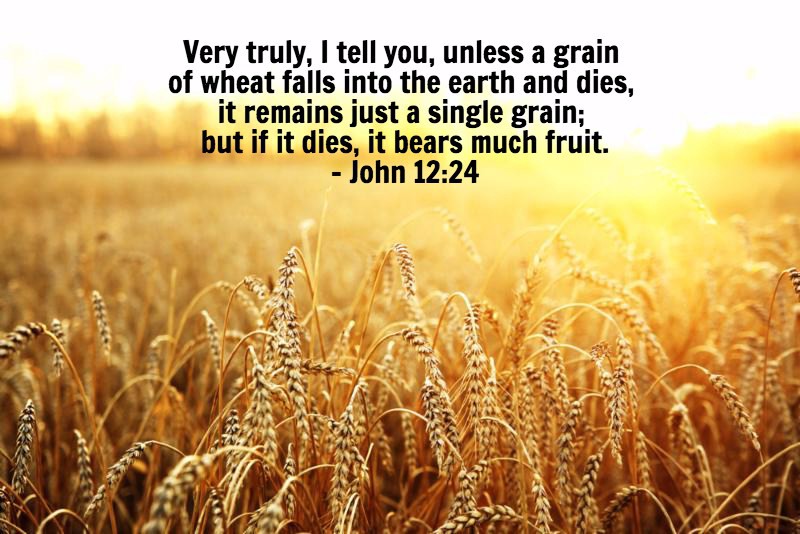
The best illustration of designation is the one that the Lord Jesus Himself gave in John 12. According to the worldly view, this part of Christ?s ministry on the earth was His golden time. In verses 12 through 23, we read that He was warmly welcomed into Jerusalem by a large crowd of Jews who were crying, ?Hosanna! Blessed is He who comes in the name of the Lord, even the King of Israel!? (v. 13). There were also some Greeks among those who went up to worship at the feast, and they asked the disciples if they could see Jesus (vv. 20?21). Not only were the Jews and Greeks excited; probably even the disciples were also, especially when Jesus said, ?The hour has come for the Son of Man to be glorified? (v. 23). They probably thought that He was going to be glorified in an outward way and might have anticipated that those who had come did so with the intention of making Christ the king of Israel. Christ however did not come to be a king outwardly, instead He came to be rule and reign inwardly within us (Rom. 5:17, 21). Then Jesus told them how He would be glorified in John 12:24:
Truly, truly, I say to you, Unless the grain of wheat falls into the ground and dies, it abides alone; but if it dies, it bears much fruit
The way Christ would be glorified, that is, designated, would be the same way that a grain of wheat falls into the earth, dies, and rises up. Christ did not want to remain as a single seed to rule and reign over people outwardly. Christ wanted his life to be multiplied and propagated so that He might rule and reign within His believers inwardly.
By merely looking at a seed, it is difficult to tell what type it is or what kind of plant it will become. However, when it is sown and grows to become mature, everyone can see plainly what kind of grain it is. This is designation. The Lord likened Himself to a grain of wheat. As the only begotten Son of God, Christ possessed only divinity (the gold star we saw in figure 5 but without the 3 circles). Then He stepped out of eternity into time with His divinity into humanity (figure 5). He was the embodiment of the Triune God. In Him was life (Gk. zoe), the life of God (John 1:4). Thus, as the grain of wheat, He possessed within the shell of His humanity the eternal life of God. Not only was life within Him; He was life itself (11:25; 14:6). In John 10:10b, Jesus told the Pharisees, ?I have come that they may have life and may have it abundantly.? The purpose of His coming was that the life that was within Him could become ours as well. Hence, as the grain of wheat with the eternal life of God within the shell of His humanity, He fell into the ground and died. Christ had to be crucified to be designated. The shell of His humanity had to be broken so that the divinity within Him could be released.
At the same time that a grain of wheat dies, it is also growing. This is what Paul speaks about in 1 Corinthians 15:36?37 when he says,
Foolish man, what you sow is not made alive unless it dies; and what you sow, you do not sow the body that will be, but a bare grain, perhaps of wheat or of some other.
We know that Paul was was speaking concerning resurrection because he goes on to say in verses 42?43:
So also is the resurrection of the dead. It is sown in corruption, it is raised in incorruption; It is sown in dishonor, it is raised in glory; it is sown in weakness, it is raised in power
Likewise, while Jesus was dying on the cross, He was resurrecting (1 Pet. 3:18). While a team of Roman soldiers was putting Him to death, the ?team? of the Triune God was within Him, empowering His divinity from within with the power of resurrection life. This is how that while He was dying, He could also be resurrecting at the same time. Thus, in the same way that wheat is designated when it grows, Christ was designated the Son of God when He came up in resurrection (Rom. 1:4 ; Acts 13:33). Incarnation was God being born into man as the only begotten Son of God. Resurrection was humanity being born into divinity as the firstborn Son of God.
THE SIGNIFICANCE OF CHRIST BEING ?SONIZED? AS THE FIRSTBORN
 Image borrowed with permission from agodman.com
Image borrowed with permission from agodman.com
This is why Acts 13:33 and Heb. 1:5?6 speaks of ?this day? the day of Christ?s resurrection, as the day Christ was ?begotten.? The use of the word ?sonize? to describe the process of designation in Rom. 1:4 hinges on Christ being begotten in Acts 13:33. According to Acts 13 Christ had two births. When Jesus was with the disciples he alluded that his death and resurrection would be a type of birth (John 16:21). In Christ?s first birth the Godhead was born into Christ?s human spirit (figure 5). In Christ?s second birth God was born into Christ?s soul and body (figure 7). Said differently, incarnation deified Christ?s human spirit and resurrection deified Christ?s soul and body.
In incarnation, Christ as the only begotten Son of God possessed only divinity and a humanity which had not yet been deified. But by His simultaneous death and resurrection He was raised up to become the firstborn Son of God (1 Pet. 3:18, Rom. 8:29) and in the process He uplifted His humanity into the Godhead. In this sense the humanity of Christ was ?begotten? by being resurrected. In His incarnation, He brought divinity into humanity. However, in His resurrection, He brought His humanity into divinity, and His humanity was deified, that is, sonized. By his resurrection He was designated the firstborn Son of God in His humanity. Now as the firstborn Son of God in resurrection, He no longer possesses only divinity and a sinless humanity; He possesses divinity and a humanity which has been deified.
In His resurrection, Christ did not rise alone; He also produced many grains of wheat. First Peter 1:3 says that we were regenerated ?through the resurrection of Jesus Christ.? Although in our eyes we were regenerated the day we believed into the Lord, we must realize that in God?s eyes, we were regenerated two thousand years ago when Christ was resurrected, for that is when we became the many sons of God, the many brothers of Christ (Rom. 8:29). Now we are all grains ? the ?much fruit? that Jesus Christ as the grain of wheat would bring forth in resurrection (John 12:24). As the many grains, we need to be designated; we need to go through this same process of being sonized.
Let me go further to quote this amazing passage:
In His resurrection Christ became God?s firstborn Son, the many sons of God as His members, and the life-giving Spirit (Acts 13:33; 1 Pet. 1:3; 1 Cor. 15:45; Col. 3:10?11). In His resurrection, Christ not only became the Firstborn (Rom. 8:29), but He became the many sons of God. Some may think that He only became the firstborn Son of God, but according to John 12:24, in His resurrection, He is the one grain who came up out of death into resurrection and produced the many grains. These many grains are His many brothers (John 16:21, 20:17), and these many brothers are the many members of the Body of Christ (Rom. 12:5), who are in turn the many members of the new man (Eph. 2:15?16). In the new man, Christ is all the members and is in all the members (Col. 3:10?11). By this, we can see that in resurrection He became us.
Resurrection is for dispensing God?s life into humanity
The great revelation unlocked by these verses is that resurrection is for the impartation of the divine life into humanity. This began with Christ as the prototype and continues with the believers as the mass reproduction (John 3:6, John 1:13, Heb. 2:10, Rom 8:29?30, 1 John 3:2). I hope that my readers can have a greater appreciation of resurrection by understanding these two divine titles of Christ. These two titles testify that resurrection was the means by which the Last Adam came to be fully deified. This is also how we as the many sons of God will be deified once we experience Christ?s resurrection in full. I would like to leave you with a few more figures from God?s Plan of Redemption as teasers for a future blog post. The bible?s promise, that one day God and man will be joined together in marriage as a husband and wife, is a great revelation. How can fallen sinners be made to match God to the point where they can enter into the highest state of intimacy with Him? This is a great mystery.
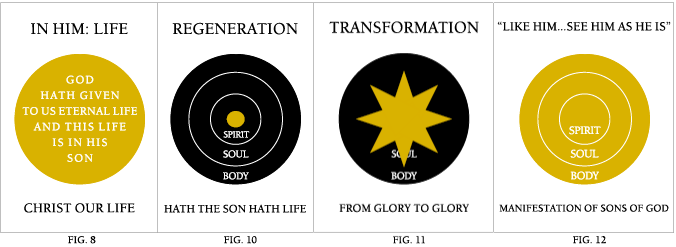
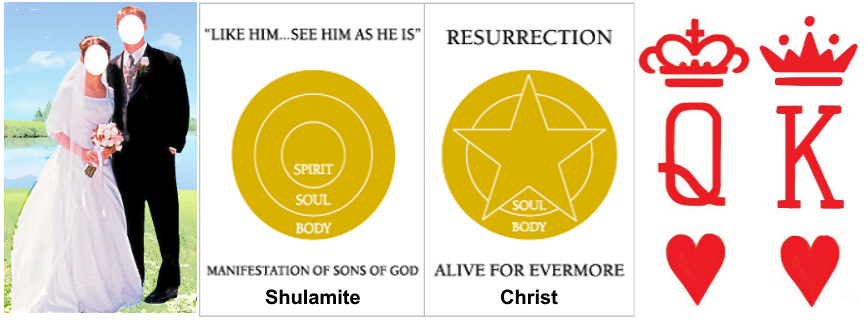 The Truth should triumph and be King, and freedom should be queen
The Truth should triumph and be King, and freedom should be queen
